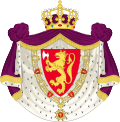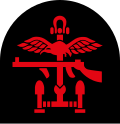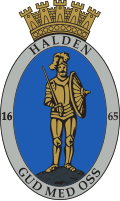This is an incomplete list of Norwegian coats of arms . Today most municipalities and all counties have their own coats of arms. Many Norwegian military units and other public agencies and some private families have coats of arms. For more general information see the page about Norwegian heraldry.
Contents
- National
- Royal
- Civilian agencies
- Military
- Ministry of Defence
- Norwegian defence sector
- Defence Staff
- Norwegian Army
- Royal Norwegian Navy
- Royal Norwegian Air Force
- Norwegian Home Guard
- Cyber Defence Force
- Special Operations Command
- Defence University College
- Intelligence Service
- Allied units
- Counties and municipalities
- Agder
- Akershus
- Buskerud
- Finnmark
- Innlandet
- Møre og Romsdal
- Nordland
- Oslo
- Rogaland
- Telemark
- Troms
- Trøndelag
- Vestfold
- Vestland
- Østfold
































































































































































































































































































































































































































































































































































































































































































































































































































































































































































































































































































































































































































































































